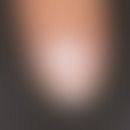Synonym(s)
HistoryThis section has been translated automatically.
DefinitionThis section has been translated automatically.
A disease belonging to the cutaneous non-Langerhans cell histiocytoses in the narrower sense (see xanthogranulomas below) with the formation of brownish maculopapular foci. So far in the international literature about 70 cases have been published (Polat Ekinci A et al.2017).
However, the independent nature of the entity is now disputed.
According to recent findings, there is overlap with juvenile xanthogranuloma or with other non-Langerhans cell histiocytoses.
You might also be interested in
Occurrence/EpidemiologyThis section has been translated automatically.
m:w=1:1
ManifestationThis section has been translated automatically.
In a larger series (n=11), the initial manifestation was at 8 months (3-36 months).
LocalizationThis section has been translated automatically.
Lesions are first expected on the face (cheeks 22%, eyelids 13%, forehead 13%, ears 10%) in a large proportion of patients, followed by trunk and proximal extremities (Polat Ekinci A et al 2017); no mucosal involvement.
ClinicThis section has been translated automatically.
Slightly raised, brownish-yellowish, symptomless papules with a smooth surface. No mucous membrane infestation.
HistologyThis section has been translated automatically.
Differential diagnosisThis section has been translated automatically.
Langerhans cell histiocytosis (histological differentiation)
Urticaria pigmentosa: Darier sign positive
cutaneous mastocytoma: Darier sign positive
Differential differentiation from other non-Langerhans cell histiocytoses is difficult or impossible.
TherapyThis section has been translated automatically.
Wait, as spontaneous regression often occurs (after 2-5 years with formation of atrophic, pigmented scars). CO 2 lasertreatment is possible if the patient wishes to undergo a pronounced therapy (but there is an increased risk of scarring!).
Good effects were achieved with topical 1% rapamycin (Habeshian K et al. 2019).
Progression/forecastThis section has been translated automatically.
HV persisted for several years on average (after 5 years, about 50% of patients heal without therapy with mild scarring and hyperpigmentation - Polat Ekinci A et al. 2017).
LiteratureThis section has been translated automatically.
- Gianotti F et al (1971) Singuliere histiocytose infantile a cellules avec porticules vermiformes intracytoplasmiques. Bull Soc Fr Dermatol Syphiligr 78: 232-233.
- Godfrey KM et al (1990) Benign cephalic histiocytosis: a case report. Br J Dermatol 123: 245-248.
- Habeshian K et al (2019) Treatment of benign cephalic histiocytosis with topical 1% rapamycin ointment. Pediatr Dermatol 36:411-413.
- Jih DM et al (2002) Benign cephalic histiocytosis: a case report and review. J Am Acad Dermatol 47: 908-913.
- Mitsui Y et al (2018) Case of S100-positive benign cephalic histiocytosis involving monocyte/macrophage lineage marker expression. J Dermatol 45:e344-e345.
- Polat Ekinci A et al.(2017) Novel Clinical Observations on Benign Cephalic Histiocytosis in a Large Series. Pediatr Dermatol 34:392-397.
- Utikal J et al (2003) Cutaneous non-Langerhans' cell histiocytoses. J Dtsch Dermatol Ges 1: 471-491.
- Weston WL et al (2000) Benign cephalic histiocytosis with diabetes insipidus. Pediatr Dermatol 17: 296-298.
Incoming links (3)
Congenital self-healing reticulohistiocytosis; Cutaneous mastocytoma; Histiocytoses non-langerhans cell histiocytoses;Outgoing links (7)
Cutaneous mastocytoma; Histiocytoses non-langerhans cell histiocytoses; Juvenile xanthogranuloma; Langerhans cell histiocytosis (overview); Maculopapular cutaneous mastocytosis; Sirolimus; Xanthogranulomas (overview);Disclaimer
Please ask your physician for a reliable diagnosis. This website is only meant as a reference.




